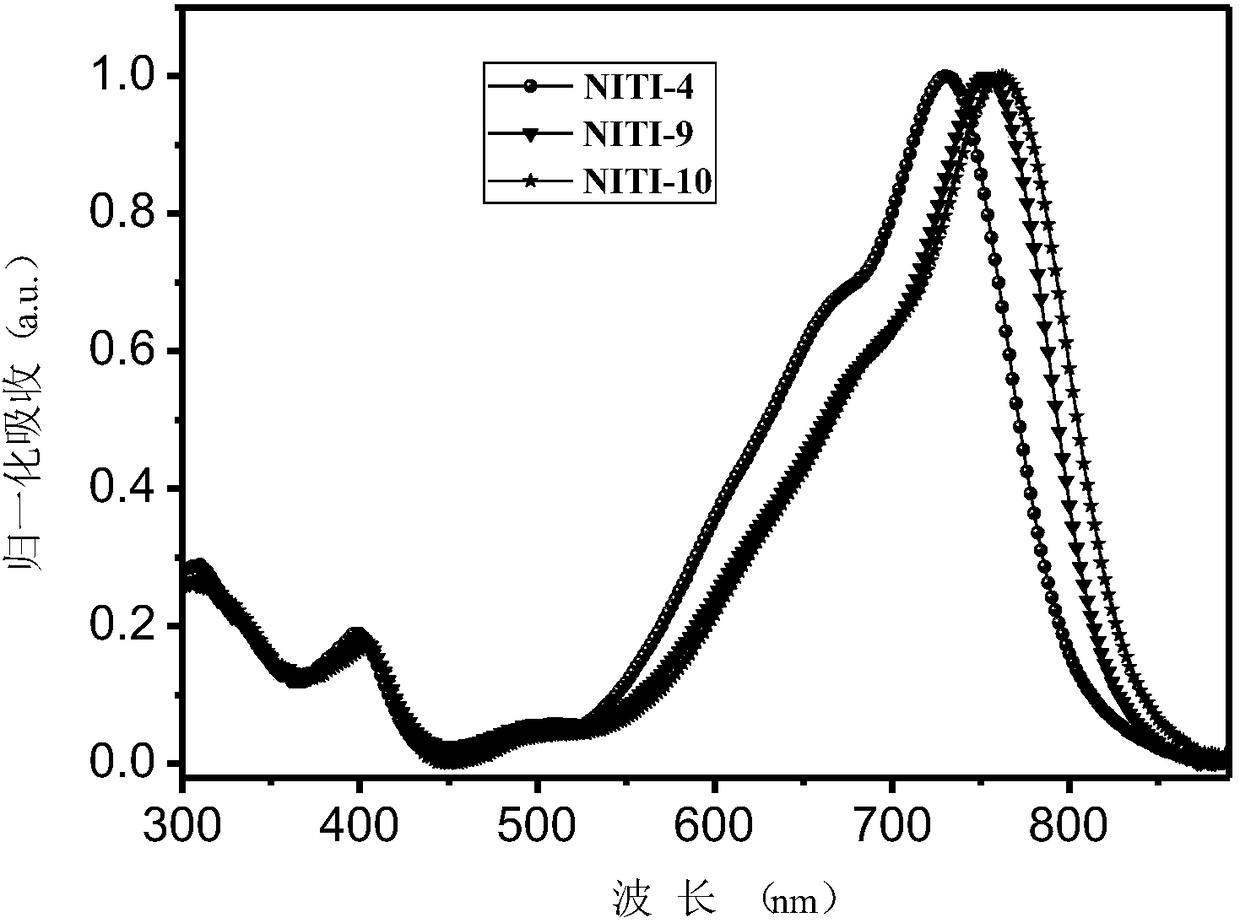Indenoindene photovoltaic receptor material, method for preparing same and application of indenoindene photovoltaic receptor material
A technology selected from, compound, applied in the direction of organic semiconductor device materials, photovoltaic power generation, semiconductor/solid-state device manufacturing, etc.
- Summary
- Abstract
- Description
- Claims
- Application Information
AI Technical Summary
Problems solved by technology
Method used
Image
Examples
Embodiment 1
[0074] Embodiment 1: Preparation of NITI-1
[0075]
[0076] 1) Preparation of compound 3: N 2 Under ambient conditions, compound 1 (0.1mmol) and compound 2 (0.3mmol) were dissolved in 3mL sodium carbonate solution (2M) and 6mL dioxane mixed solvent, added tetrakis (triphenylphosphine) palladium (0.026mmol), avoid After reacting at 95°C for 16 h, the solvent was rotated off under reduced pressure, and the residue was separated by column chromatography to obtain orange compound 3 with a yield of 65%. MS(MALDI-TOF):1065.2[M] + .
[0077] 2) Preparation of NITI-1: N 2 Under ambient conditions, compounds 3 (0.065mmol) and 4 (0.390mmol) were dissolved in 6mL of chloroform solution, 3 drops of pyridine solution was added dropwise, reacted at 75°C for 16h, the solvent was spinned off under reduced pressure, and the residue was separated and purified by column chromatography to obtain black Product NITI-1, yield 86%. MS(MALDI-TOF):1417.3[M] + .
Embodiment 2
[0078] Embodiment 2: the preparation of NITI-2 and NITI-3
[0079]
[0080] The preparation process of NITI-2 and NITI-3 is basically the same as that of NITI-1, the only difference is that compound 2 is replaced by compound 5 or 6.
[0081] NITI-2 yield 93%. MS(MALDI-TOF):1754.2[M] + .
[0082] NITI-3 yield 88%. MS(MALDI-TOF):1754.2[M] + .
Embodiment 3
[0083] Embodiment 3: the preparation of NITI-4
[0084]
[0085] The preparation process of NITI-4 is basically the same as that of NITI-2, the only difference is that compound 1 is replaced by compound 7.
[0086] NITI-4 yield 95%. MS(MALDI-TOF):1562.1[M] + .
PUM
 Login to View More
Login to View More Abstract
Description
Claims
Application Information
 Login to View More
Login to View More - R&D
- Intellectual Property
- Life Sciences
- Materials
- Tech Scout
- Unparalleled Data Quality
- Higher Quality Content
- 60% Fewer Hallucinations
Browse by: Latest US Patents, China's latest patents, Technical Efficacy Thesaurus, Application Domain, Technology Topic, Popular Technical Reports.
© 2025 PatSnap. All rights reserved.Legal|Privacy policy|Modern Slavery Act Transparency Statement|Sitemap|About US| Contact US: help@patsnap.com



